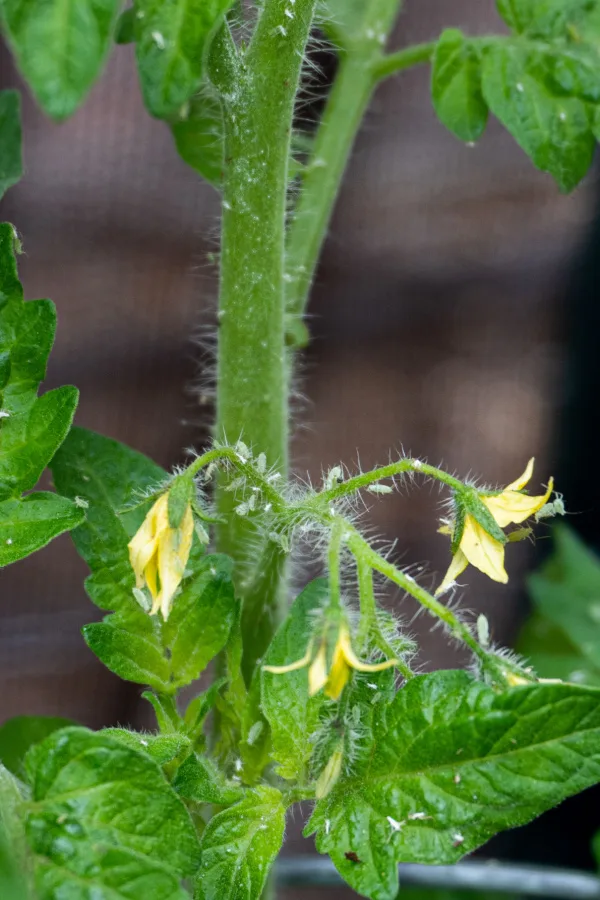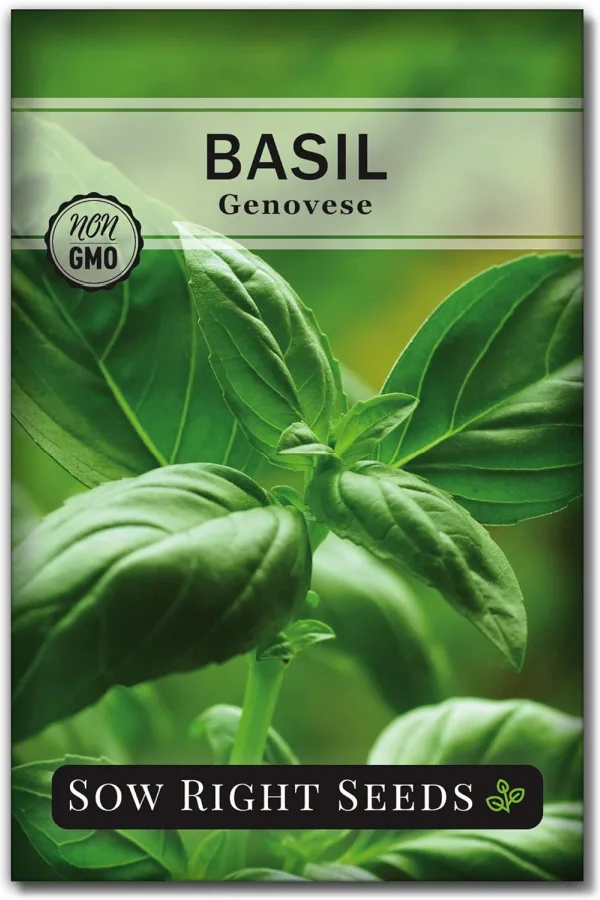Did you know that planting basil with your tomato plants is one of the best kept secrets to keep your tomatoes healthy and strong – and grow better tasting tomatoes? And – that planting it is as simple as putting a few basil seeds in the ground right around your tomato plants?
Basil and tomatoes certainly are great partners in the kitchen. There are hundreds of incredible dishes, salads and appetizers that pair the two together when it comes to creating delicious foods – but as it turns out, tomato and basil plants also happen to be great partners in the garden as well.
In fact, when it comes to companion planting, they are one of the best examples of all for being perfect growing mates. Not only do tomato plants gain huge benefits from the basil – but the basil gets plenty of great things back from the tomato plants too!

Why To Plant Basil With Tomato Plants
The Power Of Companion Planting
Companion planting in a garden is one of the best ways to help protect and power plants. A great example of how companion planting can protect plants is with annual marigolds. The pungent smell of a marigold’s foliage and blooms repel a long list of pests. And when planted around vegetable plants and other flowers, they help to keep them safe. See our article: Why You Should Plant French Marigolds In Your Garden
But there can be other benefits to companion planting as well. Some plants can help increase yields for another plant by energizing the soil with nutrients. It is even said some companion plants can help improve another plant’s flavor when growing in close proximity.
So where does basil come into play concerning its beneficial relationship? Believe it or not, it can do all of the above and more for tomatoes!
But here is the real kicker – tomato plants also play a positive role in helping to grow healthier and stronger basil plants. Here is an in depth look at what each plant does for each other, and how to best plant them together no matter how or where you grow your tomatoes.

The Mutual Benefits of Growing Basil With Tomatoes
Basil actually rivals marigolds in the pest repelling category. It is extremely effective in repelling whiteflies, aphids and tomato hornworms. All of which can spell big trouble for a tomato plant’s health.
But basil happens to repel mosquitoes too. The mosquito benefit might not directly help your tomato plants, but it sure helps you when you are working in the garden around them!
Beyond repelling pests, basil is also known to help tomatoes to healthier, stronger growth. This occurs when nutrients from the basil’s roots enter the soil and help to energize tomato plants. But perhaps best of all, basil is also thought to improve the overall flavor profile of tomatoes when growing in close proximity.
So do tomatoes help basil grow better? The short answer is yes. The large, leafy foliage of tomato plants creates a perfect growing environment for basil. Especially when you plant basil by seed. And, as you will see below, the entire process is both easy and economical!
Basil prefers moist soil to germinate and grow. And the canopy of tomato leaves helps keep valuable moisture in the soil by shading it from the sun. This helps the seeds of basil germinate better and faster – and allows basil to mature more rapidly too.

How To Plant Basil With Tomato Plants
Although you can certainly plant basil transplants with your tomatoes, growing straight from seed is a much easier and inexpensive method.
Since tomato transplants should not be planted in the garden until the soil has warmed to at least 60° Fahrenheit, that warm soil makes it perfect for basil seeds to germinate quickly. Seed Link: Sow Right Seeds – Genovese Sweet Basil Seed for Planting
Basil will usually germinate in seven to ten days. In warmer soil, it can pop through in as little as four to five days. With basil’s fast growing habits, if you simply plant basil seeds on the day you plant your tomatoes, it will be up and helping your tomato plants in just a few weeks!
Add in that a portion of your basil plant’s leaves can actually be ready for harvest (tender baby leaves) four to five weeks after planting, and it’s easy to see why planting seeds is the way to go. Especially if you are planting it around a lot of tomatoes.
Plant Spacing For Gardens & Containers
So how much basil do you need to plant around your tomatoes? And just how close does it have to be to help?
In a traditional garden or raised bed growing space, a couple of plants around each plant is more than enough to do the job. To plant, sow four to five seeds about 12 inches away from the base of each tomato.
As seeds germinate and develop, thin to allow two basil plants for each tomato plant. When you thin, don’t forget that all of those young seedlings make for perfect transplants into pots or other garden spaces. Even better, you can pot them up and give them to friends and neighbors.
When growing basil in containers, you can either plant basil with the tomato or in its own pot close by. If you are growing in the actual pot, you will only need to grow one plant to get the benefits. If you plant more than that, it can take too much of the moisture tomatoes need. In addition, it can take valuable nutrients as well.
Seed two to three seeds per container at the time of planting, planting the seeds at the very edge of the container space. Once the seeds germinate and grow for a week or two, thin to the single strongest plant.
Growing Basil In Pots Near Your Tomatoes
If you simply don’t have the room to grow in the same pot, you can plant and grow basil in a second pot and keep it right near your tomato plants. This will give you all of the benefits of pest protection, but will not help in any soil / nutrient transfer.
One thing is for sure, wherever you plant your basil, the plants will last. Basil is a prolific self seeder. Because of this, you will usually have new volunteer plants coming up all throughout the year.
Here is to using companion planting in your garden this year. And even more, to having your best tasting crop of tomatoes ever!
This Is My Garden
Follow Our Facebook Page For Great Gardening Tips And Advice! This Is My Garden Facebook Page
This Is My Garden is a garden website created by gardeners, for gardeners. Jim and Mary Competti have been writing gardening, DIY and recipe articles and books and speaking for over 15 years from their 46 acre Ohio farm. They publish three articles every week, 52 weeks a year. Sign up today to follow via email, or follow along!

